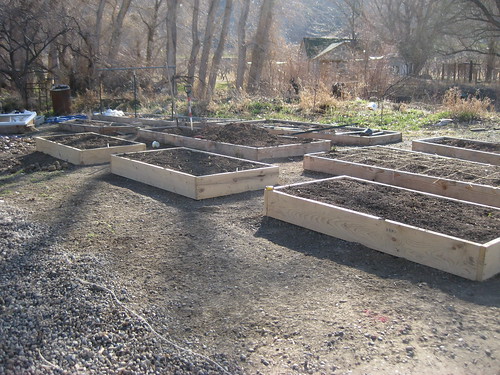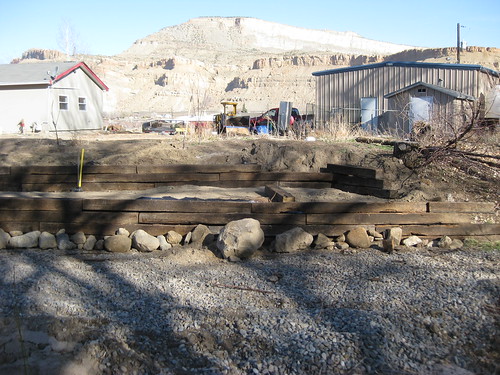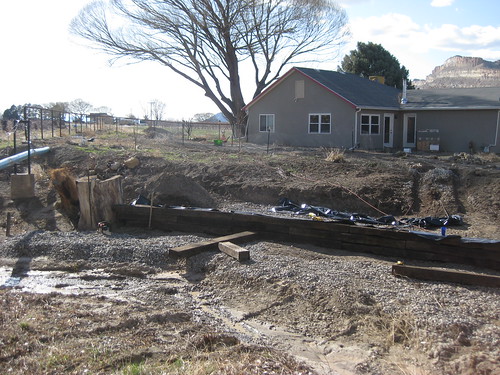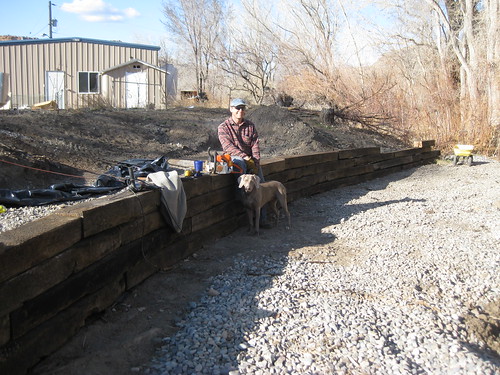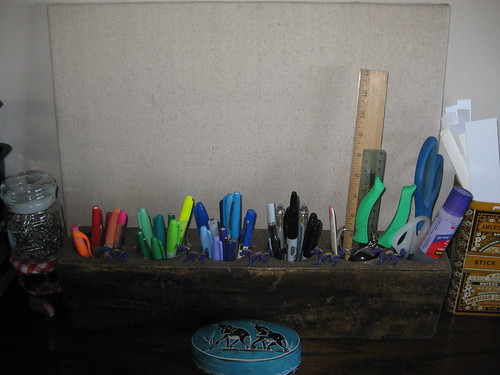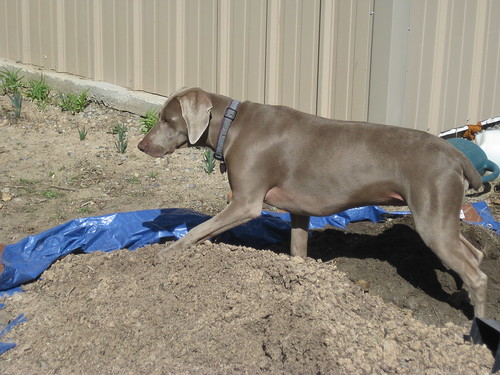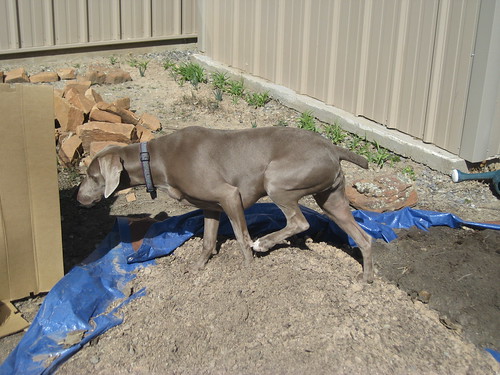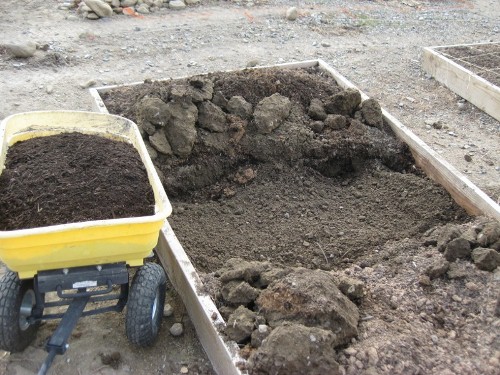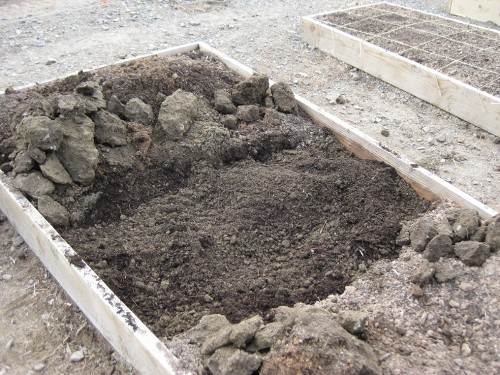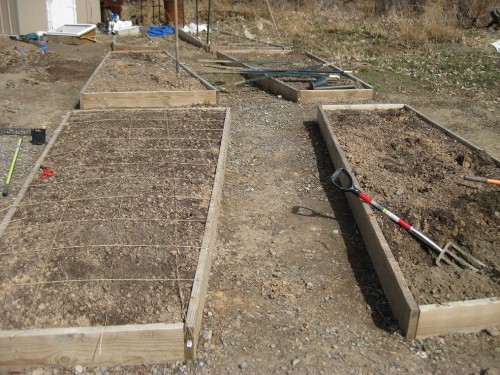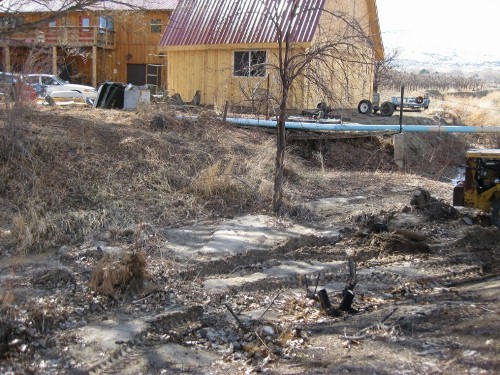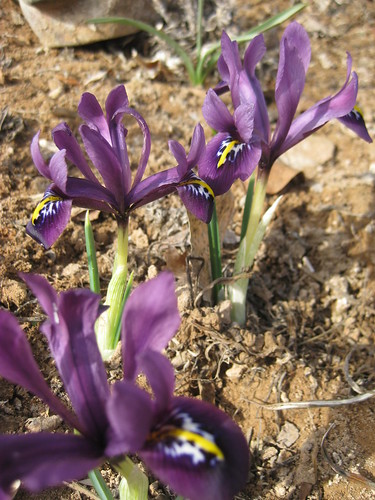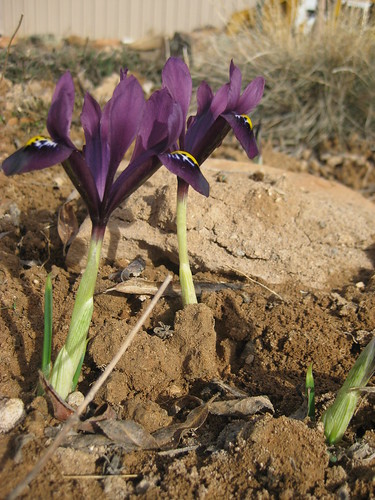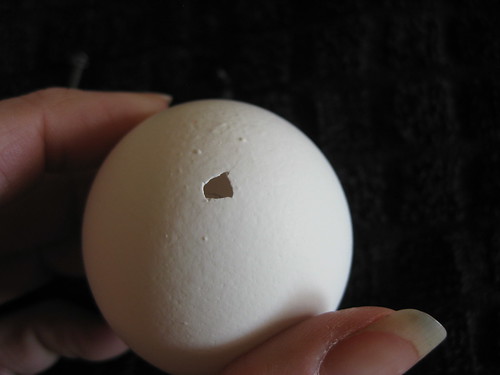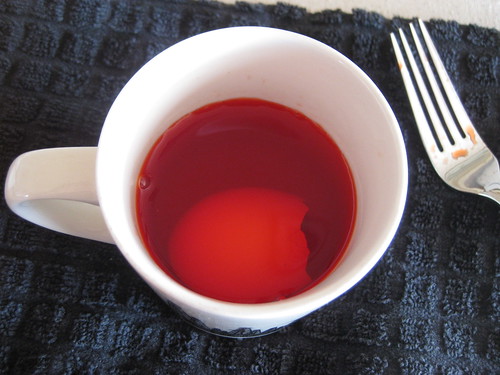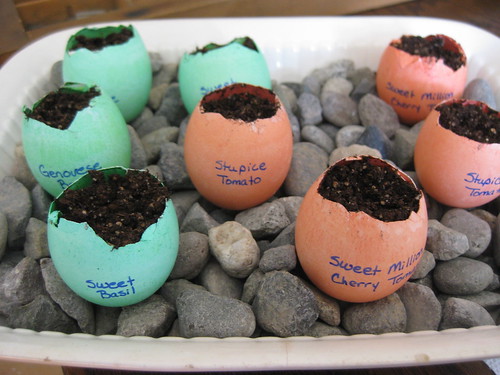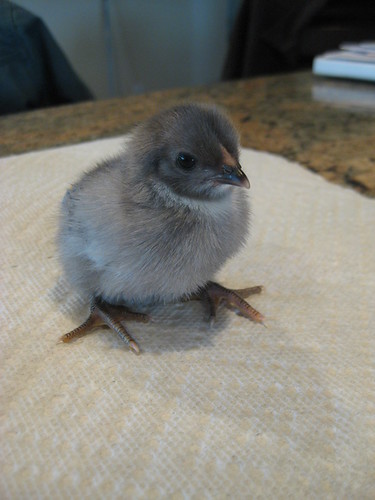So you
started some seedlings and you have a big pile of beautiful
compost. Now what? It's time to prepare your soil.
Soil preparation is key for maximum production in your vegetable garden, as well as healthy lawns and other plants. As I learned from my Soil Preparation class offered by my local
CSU extension agent, there are four main areas to focus on to achieve great soil: 1) organic content, 2) low salts, 3) deeply prepared soil, and 4) adequate nutrients.
1. Organic content
The compost that you created or bought is the star of the show here. The ideal soil will contain at least 5% organic matter (compost), 45% minerals (via the sand, silt, and clay that make up your soil), 25% water, and 25% air. Here's an interesting thing I learned. I always imagined the ideal soil as being very fine, with no lumps or clods or rocks of any kind. I was wrong! You actually do want clods of soil about 1" in diameter as a minimum. You also want some larger pieces of organic material; this is important for keeping the pores of the soil open to allow for adequate air and water, and to ensure good drainage. The roots and microbes in the ground use oxygen and create carbon dioxide, so the soil particles must be kept separate to allow for the exchange of these gases.
If you have
clay soil, prepare the dirt as deep as you can and add coarse organic matter as deep as possible. Ideally you will "double dig" or even "triple dig" your soil: Remove the top 12" of soil, loosen the next 12" of soil (and the next 12" beyond that if doing a triple dig), and mix in coarse organic matter. Add back the 12" of soil you removed, and mix more organic matter into it. For this soil type, the organic matter will improve movement of oxygen and carbon dioxide through the soil and improve movement of water into and through the soil.
If you have
sandy soil, adding organic matter will improve the soil's ability to hold water and will improve the nutrients available for your plants.
When adding organic matter, add at least 2 inches of compost (6 cubic yards for a 1,000 square foot area) and mix into the soil. If you add more organic matter (3 to 5 inches would be awesome in most cases), do it in 2-inch increments so that you're able to mix it well.
I had a question from Sandy C in Michigan (hi, Sandy!) about what to do for a lawn struggling to survive in a horrible clay soil. She wondered if the good Dr. Swift from my extension office had any pearls of wisdom for this predicament. Indeed, he did! (But I'm not sure you're going to like the answer...). The key in this situation is to amend your soil to improve movement of water and oxygen. In this case, you must aerate the lawn. Depending on the size of your lawn, you may want to rent a heavy-duty gizmo like this one that I found online for rental at
Home Depot stores.
Once you've aerated your lawn, cover it with coarse organic matter and then spend the rest of the day (or weekend?) raking the compost around your lawn in an effort to work as much of it as possible down into the holes you've just created in your soil. The key here is to use organic matter that is as coarse as possible for the size holes you just created so that you can hold open the soil to allow movement of water and oxygen/carbon dioxide. Whatever you do, don't use a fine material, because this won't hold the soil open. Dr. Swift recommended doing this process twice a year every year for a healthy lawn.
And here's an interesting bit of crucial information: If you have a clay soil, the thought may have occurred to you that you can add some sand to improve drainage. Get that thought out of your head!
Clay plus sand equals cement.
Enough said.
2. Low salts
A high salt content in your soil is sad news for your vegetables. Most vegetables will perform poorly or not at all in soil that is high in salt. My particular area of the valley has pretty good dirt, but just a few miles away it is very high in salt. In many places the salt comes to the surface and the ground will be so white that it looks like it snowed in June! The best way to determine the salt content of your soil is to have it tested. If you have a local extension office, they might offer this service (perhaps even for free, as my local office does). If you don't have a local extension office, you can try a home test kit available at your local nursery. Better yet, you can send a sample of your soil to a testing service such as
Ward Laboratories, which will not only tell you your salt level, but also the exact nutrient composition of your soil so that you can fertilize appropriately.
If your soil is low in salt, you scored. If your soil is high in salt, the only thing you can do is amend, amend, and amend your soil again by adding organic matter. Even if you build raised beds and bring in good soil, you will still have to do considerable work to create a barrier between the new, good soil and the old, high salt soil. In this case, Dr. Swift recommended a layer of a fabric weed barrier, a layer of gravel, and then another layer of fabric weed barrier between the two types of soil to prevent the salts below from leeching up into the good soil.
3. Deeply prepared soil
Your soil should be prepared as deep as possible, but at least 6 to 8 inches deep for most vegetables, and 12 to 18 inches deep for vegetables such as carrots, parsnips, and potatoes. A general rule of thumb is to prepare your soil to twice the depth of the root system of the plant you'll grow; the deeper the soil is prepared, the healthier the plant. As I mentioned above in the section on adding organic matter, if you are really gung-ho about having great soil, you can embark on the journey known as a double dig (or a triple dig if you've got your game on).
This link provides a good description of the double-dig process:
4. Adequate nutrients
Plants need the right macronutrients and micronutrients for their best growth.
Macronutrients:
Nitrogen
Phosphorus
Potassium
Calcium
Sulfur
Micronutrients:
Iron
Copper
Manganese
Zinc
Before you plant anything, it is a very good idea to get a complete soil sample (see link above for Ward laboratories) so you'll know exactly what nutrients you need to add for the plants you intend to grow. You'll need to fertilize not only based on the nutrient composition of your soil, but also on the types of plants you'll grow, because different plants have different needs.
For example, if you're growing potatoes, during the tuber bulking stage, you'll need to fertilize with one half to two thirds of a pound of nitrogen every 10-14 days per 1,000 square feet. If you're growing sweet corn, you'll need about one and a half pounds of nitrogen per 100 feet row.
When fertilizing, add by "side dressing," in which you place the fertilizer about 2 inches away from the stalk of the plant. In some cases you'll need to mix the fertilizer into the soil and then water. Follow the directions for the specific product you'll use.
I hope you've gotten some useful bits of information about preparing your soil. And just so you know that I'm practicing what I preach, in the next few days I'll provide photographic documentation of my own journey into the mysterious world of soil preparation!








